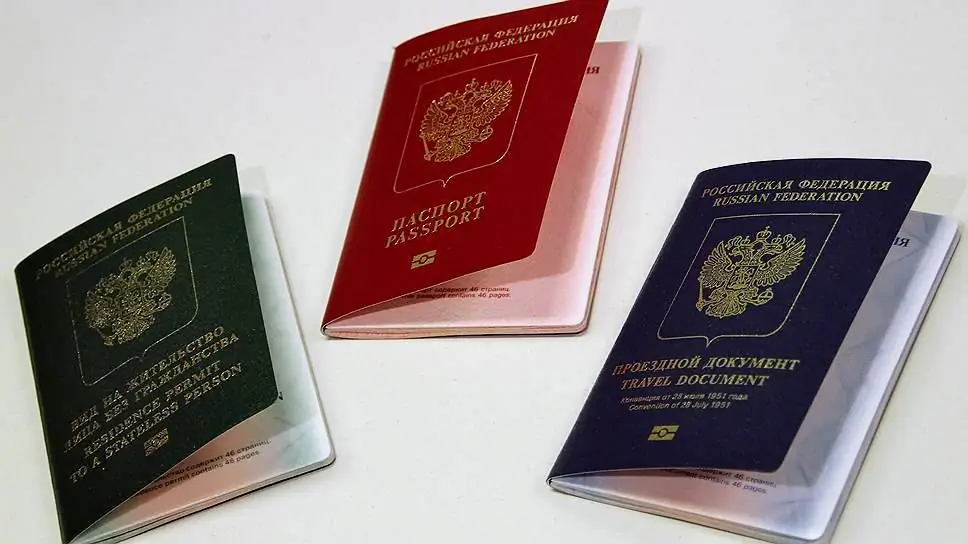2026 Author: Howard Calhoun | [email protected]. Last modified: 2025-01-24 13:10:29
All organizations involved in foreign economic activity are familiar with the term "re-export". This is a special case of exporting goods previously imported from abroad, which cancels the payment of customs duties. Let's try to understand the peculiarities of this customs procedure.

The concept of re-export
Re-export of goods is the final customs regime, which implies the export of previously imported objects from the territory of our country on special grounds, namely:
- Cancellation of the obligation of the recipient to pay customs duties for both import and export. Payment of customs expenses for imported goods is made in the usual manner, upon completion of the re-export regime, its amount can be returned.
- No economic restrictions or prohibitions apply to the subject of re-export.
It should be noted that it is not easy to achieve the introduction of such a preferential regime due to the complexity of customs clearance. There is an alternative option for exporting it from the country, such as ordinary export. In this case, the recipient of the goods to return the previously paid importcustoms taxes and duties will no longer succeed. Any goods not prohibited for import into the territory of the Russian Federation, most often raw materials, such as non-ferrous metals, leather, wool, food and others, can be re-exported.
Why might such a regime be introduced?
In the work of companies participating in international trade, circumstances arise in which a re-export regime can be applied to a product purchased from foreign sellers. These are most often the following cases:
- The purchased foreign goods are returned to the seller because they are defective or do not meet the terms of the concluded contract.
- In the case of trilateral transactions, when a Russian company resells foreign goods to trading partners from other countries at their request. Such a situation may arise, for example, if there is a ban on trade interaction between two states.

The second option in most cases involves not direct, but indirect re-export. This is a situation in which imported objects will not be imported into the territory of the Russian Federation, but will go directly to the final buyer. In addition, re-export can be used as a customs regime that completes the actions of others: duty-free trade, temporary import or storage, processing in the customs territory or under its control, etc.
Goods that can be re-exported
Under this customs regime, both objects subject to direct re-export andpreviously released into circulation and under customs control. The legislation of the Russian Federation regulates that the re-export procedure assumes that the goods to be sent abroad comply with the following basic requirements:
- Not issued for circulation, awaiting the completion of any customs regime.
- Released for internal consumption, returned to the seller due to defects or non-compliance with the parameters stated in the contract.
- Items that have not been used or repaired except to the extent necessary to identify defects or irregularities warranting a return.
- Availability of clarifying information, serial numbers or articles and their absolute compliance with the attached customs declaration.
- The term for sending goods put into circulation for re-export is 1 year.

Special conditions for certain types of goods
There are some types of goods that are subject to specific requirements for re-export. This primarily concerns dual-use objects. To use a special customs regime for them, it is necessary to coordinate with the department vested with the appropriate authority. In Russia, these functions are performed by the Ministry of Economic Development and Trade, Department of Export Control. In addition, there is no possibility of re-export of dual-use goods to third countries without the written consent of the exporting state.
As for excisable objects, thenthey have the following nuances of this customs procedure:
- If the goods are declared as destined exclusively for re-export, the marking in this case does not apply.
- If goods have already been imported with excise control attributes, all stamps must be damaged in a special way before export to exclude the possibility of their secondary use.
- Unmarked, sent upon importation into the territory of customs warehouses can be placed under the re-export regime.
Placement of goods released for domestic consumption under the re-export regime
The customs procedure for re-export allows this or that object to this regime only if there is an appropriate permission from the authorized customs authority that accepted the declaration when it was imported. In order to obtain such permission, a person planning to transport goods abroad in this way should provide the following package of documents:
- Confirming import into the territory of the Russian Federation and, if necessary, their release into external consumption.
- Substantiating circumstances for the importation of goods into the territory of the Russian Federation.
- Evidence of non-fulfillment of the terms of a foreign trade agreement.
- Containing information about the use of the product after its release for external consumption.
- Application for a permit with contact details of the applicant.

The customs authority that accepted the application considers it together with the attached documents and acceptsdecision on the application of the re-export regime for the goods of the applicant.
Procedure for the re-export of goods intended exclusively for these purposes
Objects imported into the territory of our country can be declared by the customs authorities as intended directly for re-export. By their own decision, a consignment preparing for export may be transferred for temporary storage to the recipient. In this case, by law, shipment abroad must be made no later than six months from the date of import.

The current customs procedure for re-export requires a list of accompanying documents for such goods:
- Permission for admission to this regime, specifying the terms of export from the territory of the Russian Federation.
- Agreement on the basis of which the goods must leave the country: import, export, tripartite.
- Supporting documentation.
- Guarantee obligation of the recipient on the territory of the Russian Federation to export it within six months.
The same rules, except for the last paragraph, apply to objects moved for re-export from other customs regimes.
Refund of customs duties
Re-export is a special customs regime that cancels any customs taxes and duties for the recipient of the goods. However, during its implementation, all fees are charged in a general manner: separately when importing, exporting or moving goods to a customs warehouse.
When the export of a consignment under the re-export regime from the territory of the Russian Federation occurred, previously paidthe amounts of deposits may be returned to the payer upon written permission of representatives of the customs authorities. When moving goods from the modes of processing in the customs territory or temporary importation, the return of previously paid funds is possible if the following requirements are met:
- Re-export is made no later than two years after the object is imported into the territory of the Russian Federation.
- Goods to be exported during their stay in the territory of the Russian Federation were not a tool for making a profit.

Re-export in Russia stipulates that returnable deposits cannot be subject to interest or indexation.
Recommended:
Registration after receiving the TRP: list of documents, procedure for the procedure, terms

After receiving the TRP, registration in any real estate is a mandatory process for every foreigner. The article describes the time frame for registration, as well as what documents are needed for this
How does the bankruptcy procedure go? faces? Where to start the procedure?

From not so long ago in our country, the bankruptcy procedure for individuals has been launched and continues to function. faces. Most likely, this event was initiated by the state and enshrined by the legislative bodies not by chance, but in order to prevent some negative consequences that may be caused by the insolvency of citizens
How to start selling an apartment: preparation of documents, the procedure for the procedure, tips from re altors

In the life of every person, it may be necessary to sell any property. And if used items, such as furniture, household appliances or a car, can be sold without any problems through newspapers or bulletin boards, then selling an apartment is a completely different matter. Where to begin? What documents are needed? How to make a deal in order to avoid problems in the future?
Debt novation: the essence of the procedure, the procedure for carrying out, the necessary documents

Debt novation is a universal and popular legal procedure that allows you to update a deal and make it profitable for both parties. Its implementation is regulated by the legislation of the Russian Federation. The nuances of drawing up and concluding an agreement, the conditions under which it is considered legitimate are given in the article
List of new productions in Russia. Review of new productions in Russia. New production of polypropylene pipes in Russia

Today, when the Russian Federation was covered by a wave of sanctions, much attention is paid to import substitution. As a result, new production facilities are being opened in Russia in various directions and in different cities. What industries are the most demanded in our country today? We offer an overview of the latest discoveries

